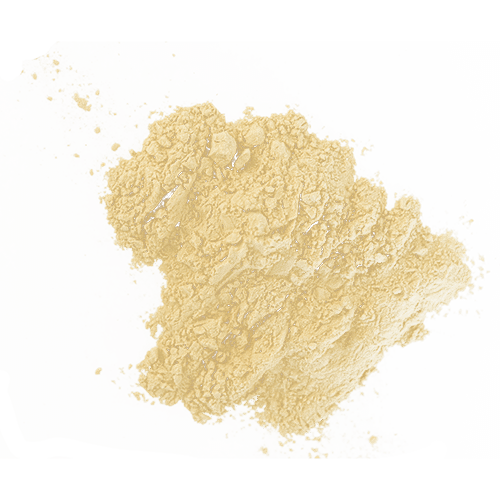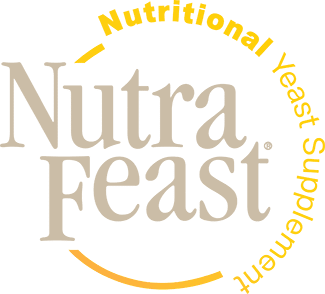
NutraFeast®
High Chromium Yeast 2000
NutraFeast® High Chromium Yeast 2000 is derived from a non-GMO yeast strain. A chromium salt is introduced to the yeast cream at the fermentation's conclusion, resulting in a bioavailable and easily absorbable form of chromium. ‡
Chromium is a trace mineral essential for the metabolism of carbohydrates, fats, and proteins 1 ‡
Our NutraFeast Nutritional Yeast is produced from a non-GMO yeast strain through a fermentation process, resulting in a primary-grown, high-protein yeast. Nutritional yeast is primarily grown for its nutritional value, not as a by-product or ingredient for other recipes. ‡
Cypress Ingredients' nutritional yeast undergoes high-temperature pasteurization, rendering the yeast inactive and eliminating its leavening ability. ‡
What is NutraFeast® High Chromium Yeast 2000?

NutraFeast® High Chromium Yeast 2000 is produced from a non-GMO yeast strain, introducing a chromium salt to the yeast cream at the end of the fermentation process. ‡
This fermentation process yields a primary-grown, high-protein yeast that develops under aseptic, aerobic conditions. ‡
During fermentation, the temperature, pH, and growth rate are closely regulated. The resulting product, or yeast cream, contains a blended chromium salt and is held in refrigerated storage to maintain cell viability. ‡
Prior to spray drying, the chilled yeast cream is pasteurized through a high temperature sterilization system ensuring it meets or exceeds established human food grade USDA microbial requirements. ‡
The composite sample collected during drying and packaging is analyzed for nutrient and microbial composition by external, independent, and certified laboratories. Once our high chromium yeast has met all QA/QC requirements, it is released for sale with a supporting Certificate of Analysis. ‡
All yeasts from Cypress Ingredients are inactive dry products. The chilled yeast cream undergoes pasteurization using a high-temperature sterilization system, ensuring it meets or surpasses the human food-grade USDA microbial standards. ‡
Chromium Yeast Research Data‡
Chromium and nutritional yeast are widely researched for their potential health benefits: 2, 3, 4, 5, 6, 7, ‡
Potential to support maintaining sugar levels for people with diabetes.
Nutritional yeast is considered beneficial for vegetarians, vegans, athletes, teenagers in puberty, and people recovering from health conditions.
Nutritional yeast is a rich source of amino acids, single cell proteins, B vitamins, and multiple bioavailable minerals (selenium, chromium, iron, zinc, magnesium, manganese, and copper).
The high protein content and balance of amino acids in nutritional yeast suggest it is an inexpensive and accessible way to mitigate the global problem of food and protein deficiency. Additionally, nutritional yeast shows promise as an alternative climate-friendly source of protein.

The potential benefits of nutritional yeast may include: 2, 6, 7
Source of B vitamins, minerals, protein, fiber, amino acids.
Vegan and plant-based friendly source of protein, B vitamins, and trace minerals.
May be a good source of antioxidants including selenomethionine and glutathione.
Request Product Information
‡These statements have not been evaluated by the Food and Drug Administration. These products are not intended to diagnose, treat, cure or prevent any disease.
1 Manganese: Mount Sinai (Accessed September 14, 2023) https://www.mountsinai.org/health-library/supplement/manganese
2 Manganese: Fact Sheet for Health Professionals (Accessed September 14, 2023) https://ods.od.nih.gov/factsheets/Manganese-HealthProfessional/
3 Strause L, Saltman P, Smith KT, Bracker M, Andon MB. Spinal bone loss in postmenopausal women supplemented with calcium and trace minerals. J Nutr. 1994 Jul;124(7):1060-4. doi: 10.1093/jn/124.7.1060. PMID: 8027856. (Accessed September 14, 2023) https://pubmed.ncbi.nlm.nih.gov/8027856/
4 Robbins D, Zhao Y. Manganese superoxide dismutase in cancer prevention. Antioxid Redox Signal. 2014 Apr 1;20(10):1628-45. doi: 10.1089/ars.2013.5297. Epub 2013 Jul 18. PMID: 23706068; PMCID: PMC3942707. (Accessed September 14, 2023) https://www.ncbi.nlm.nih.gov/pmc/articles/PMC3942707/
5 Das A Jr, Hammad TA. Efficacy of a combination of FCHG49 glucosamine hydrochloride, TRH122 low molecular weight sodium chondroitin sulfate and manganese ascorbate in the management of knee osteoarthritis. Osteoarthritis Cartilage. 2000 Sep;8(5):343-50. doi: 10.1053/joca.1999.0308. PMID: 10966840. (Accessed September 14, 2023) https://pubmed.ncbi.nlm.nih.gov/10966840/
6 Koh ES, Kim SJ, Yoon HE, Chung JH, Chung S, Park CW, Chang YS, Shin SJ. Association of blood manganese level with diabetes and renal dysfunction: a cross-sectional study of the Korean general population. BMC Endocr Disord. 2014 Mar 8;14:24. doi: 10.1186/1472-6823-14-24. PMID: 24606630; PMCID: PMC3973834. (Accessed September 14, 2023) https://www.ncbi.nlm.nih.gov/pmc/articles/PMC3973834/
7 Jach ME, Serefko A, Ziaja M, Kieliszek M. Yeast Protein as an Easily Accessible Food Source. Metabolites. 2022 Jan 11;12(1):63. doi: 10.3390/metabo12010063. PMID: 35050185; PMCID: PMC8780597. (Accessed September 14, 2023) https://www.ncbi.nlm.nih.gov/pmc/articles/PMC8780597/
8 Chapter 9 – Nutritional Yeast Biomass: Characterization and Application: Diet, Microbiome and Health (Accessed September 14, 2023) https://www.sciencedirect.com/science/article/abs/pii/B9780128114407000090
9 10 Evidence-Based Benefits of Manganese: Healthline.com (Accessed September 14, 2023) https://www.healthline.com/nutrition/manganese-benefits